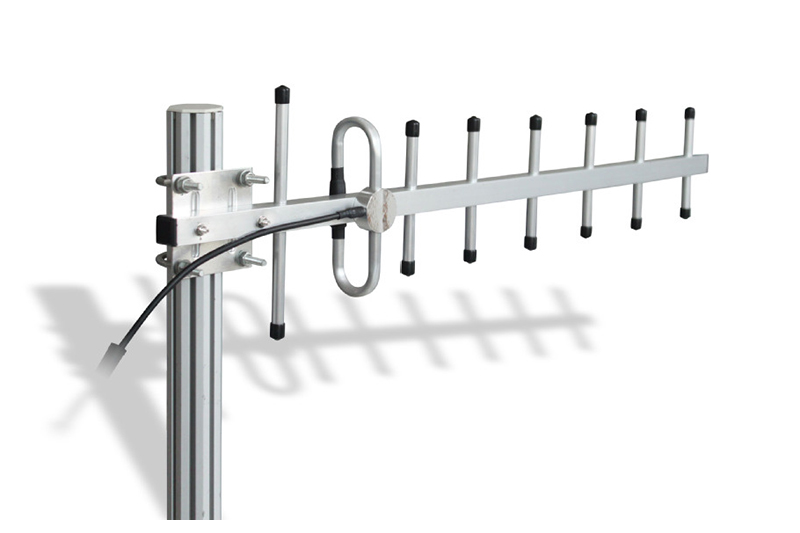Yagi antenna, as a classic directional antenna, is widely used in HF, VHF and UHF bands. Yagi is an end-shot antenna that consists of an active oscillator (usually a folded oscillator), a passive reflector and a number of passive guides arranged in parallel.
There are many factors affecting the performance of Yagi antenna, and the adjustment of Yagi antenna is more complicated than other antennas. Two parameters of the antenna are mainly adjusted: resonant frequency and standing wave ratio. That is, the resonant frequency of the antenna is adjusted around 435MHz, and the standing wave ratio of the antenna is as close to 1 as possible.

Set up the antenna about 1.5m from the ground, connect the standing wave meter and start the measurement. In order to reduce measurement errors, the cable connecting the antenna to the standing wave meter and the radio to the standing wave meter should be as short as possible. Three places can be adjusted: the capacity of the trimmer capacitor, the position of the short circuit bar and the length of the active oscillator. The specific adjustment steps are as follows:
(1) Fix the short circuit bar 5 ~ 6cm away from the cross bar;
(2) The frequency of the transmitter is adjusted to 435MHz, and the capacitor of the ceramic is adjusted to minimize the standing wave of the antenna;
(3) Measure the standing wave of the antenna from 430 ~ 440MHz, every 2MHz, and make a graph or list of the measured data.
(4) Observe whether the frequency corresponding to the minimum standing wave (antenna resonance frequency) is around 435MHz. If the frequency is too high or too low, the standing wave can be measured again by replacing an active oscillator a few millimeters longer or shorter;
(5) Slightly change the position of the short-circuit rod, and repeatedly fine-tune the capacitor of the ceramic chip to make the antenna standing wave as small as possible around 435MHz.
When the antenna is adjusted, adjust one place at a time, so that it is easy to find the rule of change. Due to the high working frequency, the amplitude of the adjustment is not too large. For example, the adjusted capacity of the fine tuning capacitor connected in series on the γ bar is about 3 ~ 4pF, and the change of a few tenths of a PI method (pF) will cause great changes in standing wave. In addition, many factors such as the length of the bar and the position of the cable will also have a certain impact on the measurement of standing wave, which should be paid attention to in the adjustment process.
Post time: Nov-30-2022




